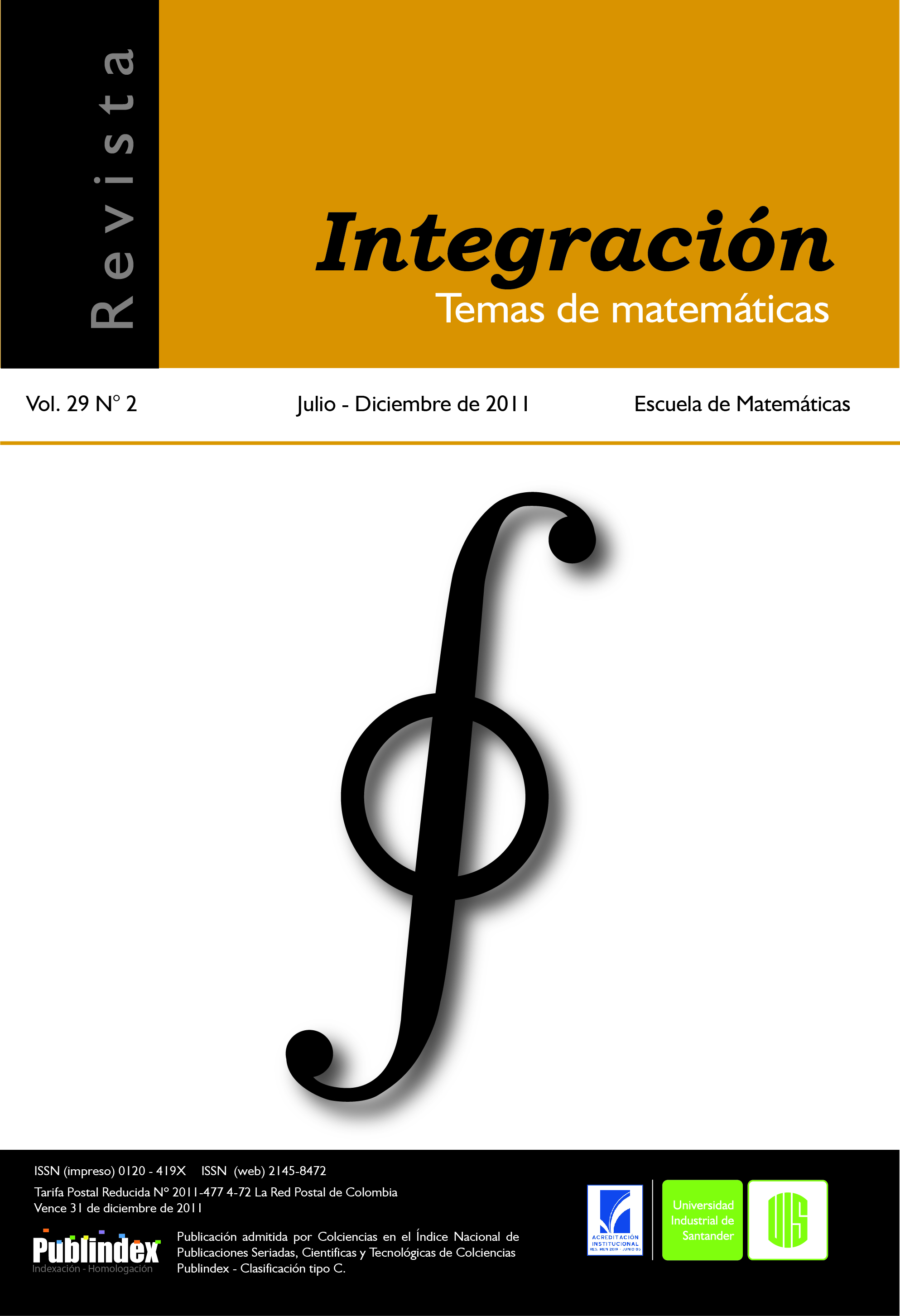Research and Innovation Articles
Published 2011-11-23
Keywords
- triplets,
- virtual knots diagrams,
- virtual knots,
- based matrix,
- nudal codes
- combinatorial knots ...More
How to Cite
Toro, M., & Rodríguez, J. G. (2011). Triplets associated to virtual knot diagrams. Revista Integración, Temas De matemáticas, 29(2), 97–108. Retrieved from https://revistas.uis.edu.co/index.php/revistaintegracion/article/view/2552
Abstract
In this paper we study the set T of triplets (E, A, B), where E pertenece {-1,1}n, A pertenece Zn and B is an integral antisymmetric matrix of order n, n pertenece Nu{0}. We define an equivalence relation on the set T and then we study properties of its equivalence classes. We describe a method to assign to each virtual knot diagram a triplet, and this is the motivation to study the set of triplets. As the assignation of a triplet depends on the virtual knot diagram, it is not a virtual knot invariant. But we try to solve this problem by using the equivalence relation defined on T.
Downloads
Download data is not yet available.
References
[1] Cairns G. and Elton D., “The Planarity Problem for Signed Gauss Words”, J. Knot Theory Ramifications, 2, No. 4 (1993), 359-367.
[2] Kauffman L.H., “Virtual knot theory”, European J. Combin. 20 (1999), 663–690.
[3] Kaufman L.H. and Manturov V.O., “Virtual knots and links” (Russian), Tr. Mat. Inst. Steklova 252 (2006), 114–133; translation in Proc. Steklov Inst. Math. 252 (2006), 104–121.
[4] Kawauchi A., A survery of knot theory, Birkhäuser Verlag, Basel, 1996.
[5] Manturov V., Knot theory, Chapman & Hall, Boca Raton, FL, 2004.
[6] Rodríguez J.G., Nudos virtuales, Tesis Doctoral, Universidad Nacional de Colombia. 2011.
[7] Rodríguez J.G. and Toro M., “Virtual knot groups and combinatorial knots”, Sao Paulo Journal of Mathematical Sciences 3, 1 (2009), 297–314.
[8] Toro M., “Nudos combinatorios y mariposas”, Rev. Acad. Colomb. Cienc. 28, 106 (2004), 79–86.
[9] Toro M., Programación en Mathematica con aplicaciones a la Teoría de Nudos. Bogotá, Universidad Nacional de Colombia, 2004.
[10] Toro M. y Rodríguez J.G., “Nudos combinatorios: una nueva visión de los nudos virtuales”, preprint, 2009.
[11] Turaev V., “Cobordism of knots on surfaces”, Journal of Topology 1, No. 2 (2008), 285–305
[2] Kauffman L.H., “Virtual knot theory”, European J. Combin. 20 (1999), 663–690.
[3] Kaufman L.H. and Manturov V.O., “Virtual knots and links” (Russian), Tr. Mat. Inst. Steklova 252 (2006), 114–133; translation in Proc. Steklov Inst. Math. 252 (2006), 104–121.
[4] Kawauchi A., A survery of knot theory, Birkhäuser Verlag, Basel, 1996.
[5] Manturov V., Knot theory, Chapman & Hall, Boca Raton, FL, 2004.
[6] Rodríguez J.G., Nudos virtuales, Tesis Doctoral, Universidad Nacional de Colombia. 2011.
[7] Rodríguez J.G. and Toro M., “Virtual knot groups and combinatorial knots”, Sao Paulo Journal of Mathematical Sciences 3, 1 (2009), 297–314.
[8] Toro M., “Nudos combinatorios y mariposas”, Rev. Acad. Colomb. Cienc. 28, 106 (2004), 79–86.
[9] Toro M., Programación en Mathematica con aplicaciones a la Teoría de Nudos. Bogotá, Universidad Nacional de Colombia, 2004.
[10] Toro M. y Rodríguez J.G., “Nudos combinatorios: una nueva visión de los nudos virtuales”, preprint, 2009.
[11] Turaev V., “Cobordism of knots on surfaces”, Journal of Topology 1, No. 2 (2008), 285–305
